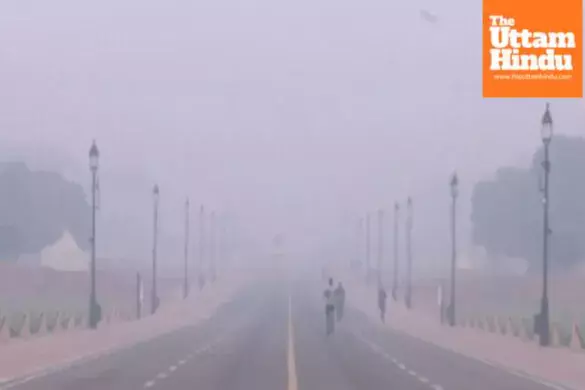Delhi chokes after Diwali celebrations; AQI breaches 400 mark in many parts

New Delhi (The Uttam Hindu): After the festival of Diwali, the air of the national capital Delhi has once again reached the very poor to severe category. Due to fireworks and weather related factors, the Air Quality Index (AQI) has crossed the 400 mark in many areas of Delhi, making it difficult for people to breathe. After the massive bursting of firecrackers on Diwali on Monday night, the Air Quality Index crossed the 400 mark at 8 am on Tuesday, which falls in the 'very poor' category.
The most surprising thing for Delhi is that on the night of Diwali, the air quality index of the entire NCR was at extremely dangerous levels. At around 11:00 pm, Delhi's air quality index reached 596. Meanwhile, on Tuesday morning, Delhi's air quality index crossed 400. According to data from the Central Pollution Control Board (CPCB), the heavy fireworks on Diwali night have led to dangerous levels of pollution in Delhi-NCR.
There will be no relief from pollution in Delhi-NCR on Tuesday. The maximum temperature is expected to be around 31 degrees Celsius and the minimum temperature is expected to be around 22 degrees Celsius. Furthermore, a light fog is also visible in Delhi-NCR on Tuesday morning, but the weather will become dry by afternoon and light sunshine is predicted. According to forecasts from the Meteorological Department (IMD) and the Indian Institute of Tropical Meteorology, air quality may deteriorate further over the next two days. Stagnant winds, a drop in temperature, and local pollution are being cited as the main reasons for this.
In light of the situation, the Commission for Air Quality Management has implemented the second phase of the Graded Response Action Plan (GRAP) with immediate effect. Under this, the Pollution Control Boards and the Delhi Pollution Control Committee (DPCC) have been directed to strictly monitor and take action. The IMD has clarified that the situation is being closely monitored and regular review meetings will be held to control pollution. Stubble burning and vehicle emissions are further exacerbating the pollution crisis, further necessitating regional cooperation to address the winter smog problem.
